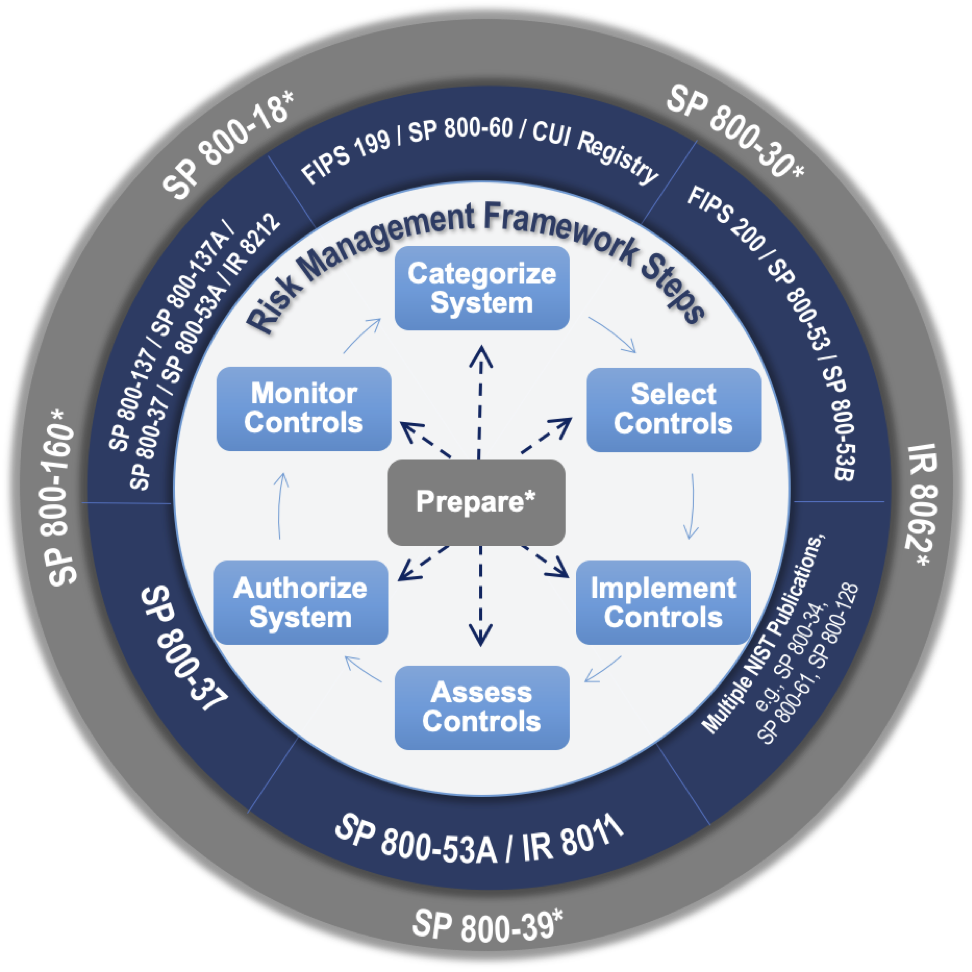The selection and specification of security controls for a system is accomplished as part of an organization-wide information security program that involves the management of organizational risk---that is, the risk to the organization or to individuals associated with the operation of a system. The management of organizational risk is a key element in the organization's information security program and provides an effective framework for selecting the appropriate security controls for a system---the security controls necessary to protect individuals and the operations and assets of the organization.
The Risk Management Framework provides a process that integrates security and risk management activities into the system development life cycle. The risk-based approach to security control selection and specification considers effectiveness, efficiency, and constraints due to applicable laws, directives, Executive Orders, policies, standards, or regulations. The following activities related to managing organizational risk are paramount to an effective information security program and can be applied to both new and legacy systems within the context of the system development life cycle and the Federal Enterprise Architecture:

Prepare carries out essential activities at the organization, mission and business process, and information system levels of the enterprise to help prepare the organization to manage its security and privacy risks using the Risk Management Framework.
Categorize the system and the information processed, stored, and transmitted by that system based on an impact analysis1
Select an initial set of baseline security controls for the system based on the security categorization; tailoring and supplementing the security control baseline as needed based on organization assessment of risk and local conditions2 .
Implement the security controls and document how the controls are deployed within the system and environment of operation3.
See appropriate NIST publication in the publications section.
Assess the security controls using appropriate procedures to determine the extent to which the controls are implemented correctly, operating as intended, and producing the desired outcome with respect to meeting the security requirements for the system .
Authorize system operation based upon a determination of the risk to organizational operations and assets, individuals, other organizations and the Nation resulting from the operation of the system and the decision that this risk is acceptable 4.
Monitor and assess selected security controls in the system on an ongoing basis including assessing security control effectiveness, documenting changes to the system or environment of operation, conducting security impact analyses of the associated changes, and reporting the security state of the system to appropriate organizational officials 5.
See the Risk Management Framework presentation slides with associated security standards and guidance documents. These slides are based on NIST SP 800-37 Rev. 1.
Footnotes:
1. The RMF categorize step, including consideration of legislation, policies, directives, regulations, standards, and organizational mission/business/operational requirements, facilitates the identification of security requirements. FIPS 199 provides security categorization guidance for nonnational security systems. CNSS Instruction 1253 provides similar guidance for national security systems.
2. NIST Special Publication 800-53 Revision 4 provides security control selection guidance for nonnational security systems. CNSS Instruction 1253 provides similar guidance for national security systems.
3. NIST Special Publication 800-53A Revision 4 provides security control assessment procedures for security controls defined in NIST Special Publication 800-53.
4. NIST Special Publication 800-37 Revision 2 provides guidance on authorizing system to operate.
5. NIST Special Publication 800-37 Revision 2 provides guidance on monitoring the security controls in the environment of operation, the ongoing risk determination and acceptance, and the approved system authorization to operated status.
Security and Privacy: risk management
Laws and Regulations: E-Government Act, Federal Information Security Modernization Act